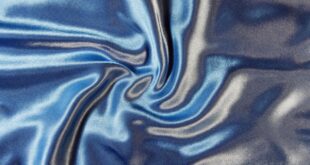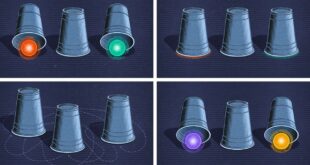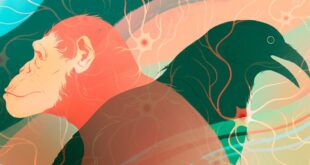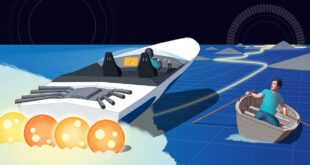Touch both objects. They’re the same temperature, but the wood feels warmer, right? Why is that? It’s not about temperature but thermal energy. When your hand touches an object, there is a heat conduction interaction. Energy is transferred from your warmer hand to the cooler object until the two are …
Read More »Science / Physics and Math
How to Make AI Faster and Smarter—With a Little Help from Physics
What exactly is AI Scientist—just a fancy kind of neural net? It’s not a single neural network, but rather an ensemble of computer programs that can help scientists make new discoveries. My group has already developed algorithms that can help with individual tasks, such as weather forecasting, identifying the drivers …
Read More »Is Using a Stair Machine the Same as Climbing Stairs?
Since the change in kinetic energy is still zero, this means that the positive change in gravitational potential energy is equal to the negative of the change in internal energy. Let’s say you have a mass of 75 kilograms (165 pounds). That means moving up 1 meter would reduce your …
Read More »The Quest to Prove the Existence of a New Type of Quantum Particle
When you swap two paraparticles, these hidden properties change in tandem. As an analogy, imagine that these properties are colors. Start with two paraparticles, one that’s internally red and another that’s internally blue. When they swap places, rather than keeping these colors, they both change in corresponding ways, as prescribed …
Read More »Intelligence on Earth Evolved Independently at Least Twice
“How we end up with similar circuitry was more flexible than I would have expected,” Zaremba said. “You can build the same circuits from different cell types.” Zaremba and her team also found that in the bird pallium, neurons that start development in different regions can mature into the same …
Read More »Why Pigeons at Rest Are at the Center of Complexity Theory
By January 2020, Papadimitriou had been thinking about the pigeonhole principle for 30 years. So he was surprised when a playful conversation with a frequent collaborator led them to a simple twist on the principle that they’d never considered: What if there are fewer pigeons than holes? In that case, …
Read More »The Phony Physics of Star Wars Are a Blast
I’m a huge fan of Star Wars. The first movie (no, not Episode 1) came out when I was young, so I grew up thinking about the Millennium Falcon and lightsabers. Perhaps it sparked my interest in science—even if it’s not exactly science fiction. Oh, there’s a nice way to …
Read More »A New Quantum Algorithm Speeds Up Solving a Huge Class of Problems
The original version of this story appeared in Quanta Magazine. For computer scientists, solving problems is a bit like mountaineering. First they must choose a problem to solve—akin to identifying a peak to climb—and then they must develop a strategy to solve it. Classical and quantum researchers compete using different …
Read More »Scientists Are Mapping the Bizarre, Chaotic Spacetime Inside Black Holes
The original version of this story appeared in Quanta Magazine. At the beginning of time and the center of every black hole lies a point of infinite density called a singularity. To explore these enigmas, we take what we know about space, time, gravity, and quantum mechanics and apply it …
Read More »






